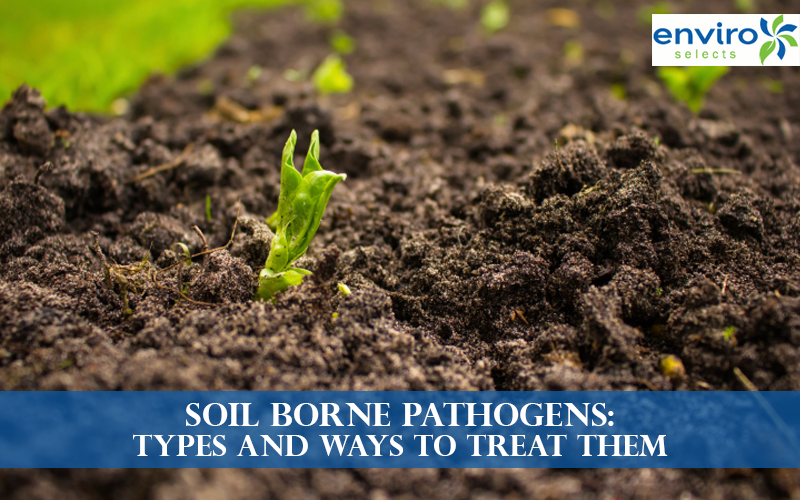Of all the problems plants encounter, soil-borne diseases are the most irritating and frustrating to fight against. You may think that you've taken precautions, but then realize that your plants are stunted or near death. Microorganisms that travel inside the soil and thrive are the leading cause of soil-borne diseases. Most of them go unnoticed and only become obvious when the plant is sick. The three factors cause diseases in plants are the pathogens, the host, and the conditions. Several products, such as TerraClean 5.0, are available in the market to protect the soil against pathogens. Here's an explanation of the types of soil-based pathogens that exist, and how to treat them.
Types of Soil Borne Pathogens
Soil-based pathogens include pre- and post-emergence damping-off like Pythium, Fusarium and Rhizoctonia, root rot, vascular wilts, and nematodes, etc. Most bactericides/fungicides like TerraClean help to remove such pathogens on several different plants.
Some common pathogen types are:
- Fungi
- Bacteria
- Nematodes
Diseases Caused by Pathogens
Root Rot: Root rot is caused when the root system begins to collapse. Pathogens infect the roots and block the flow of water and nutrients throughout the plant. As a result, the plant starts to dry out and turn yellowish. Typically, the symptoms of this disease are often mistaken for nutrient-deficiency or dryness. Fungi are responsible for the development of such root diseases, and some fungicides, such as TerraClean 5.0, are most effective against this.
Stem Collar and Head Rots: A number of pathogens that affect the plant at ground level are the cause of this disease. The symptoms are similar to root rot, but because they are above ground level, they are easy to detect. Common pathogens that cause this disease are a late blight, Sclerotium, Rhizoctonia, and Phytophthora, which are easily treated with standard fungicides.
Damping-off: Post and pre-emergence damping-off is caused by several pathogens. Pre-emergence damping-off means the seedling starts to decay before it even appears above the soil. This is caused by many factors like poor, cold, hot or wet soil, poorly drained soil, or the presence of un-decayed organic matter that blocks the germination of seed. Post-emergence damping-off means the roots and stems of a seedling are attacked above soil level, and it falls over. High sale concentration in the soil also causes post-emergence damping. When treated with fungicides like TerraClean, damping-off can be reduced to some level.
Wilts and Nematodes: Vascular withering and wilts are characterized by discoloration of the vascular system on stems, branches, or trunks. Besides, nematodes, also called roundworms, are segmented worms with heads on both sides. Some are parasites that attack other larvae, while others attack and feed on plant roots. Nematodes are very problematic for root crops because they cause distortion and swelling of the roots and affect plant growth and development.
Others: Besides these visible soil pathogen diseases, several bacteria and viruses also result in plants needing treatment from chemical or potent fungicides like TerraClean 5.0 to stay strong against them.
Simple Ways to Treat Soil Borne Pathogens
Fertilizer Application and Soil Drainage: Applying fertilizers with proper irrigation improves the overall health of plants and reduces any impact that potential diseases might have. Properly managing soil drainage systems allows for pathogens to be removed from the soil and prevents them from spreading to other areas. Watering the soil reduces nematodes activity as well as pathogens, and helps to eliminate soil borne diseases.
Chemical Controlling: One of the most common ways to eradicate soil-borne pathogens is to treat the soil with effective fungicides such as TerraClean. These fungicides are designed to eliminate or significantly reduce the effects of any disease before it makes contact with plants in the vicinity. Some other chemical controlling methods include fumigation, disinfection, hygiene of handling equipment, and control of insect vectors.
Using Compost: Treating the soil with live, active compost will help keep it healthy and remove pathogens, as well. This works by introducing microbes that protect the soil against disease. Using enough compost will turn an existing microbe into a plant head. Consider compost as a first aid to a plant against new diseases that appear to destroy it.


Comments
Post a Comment